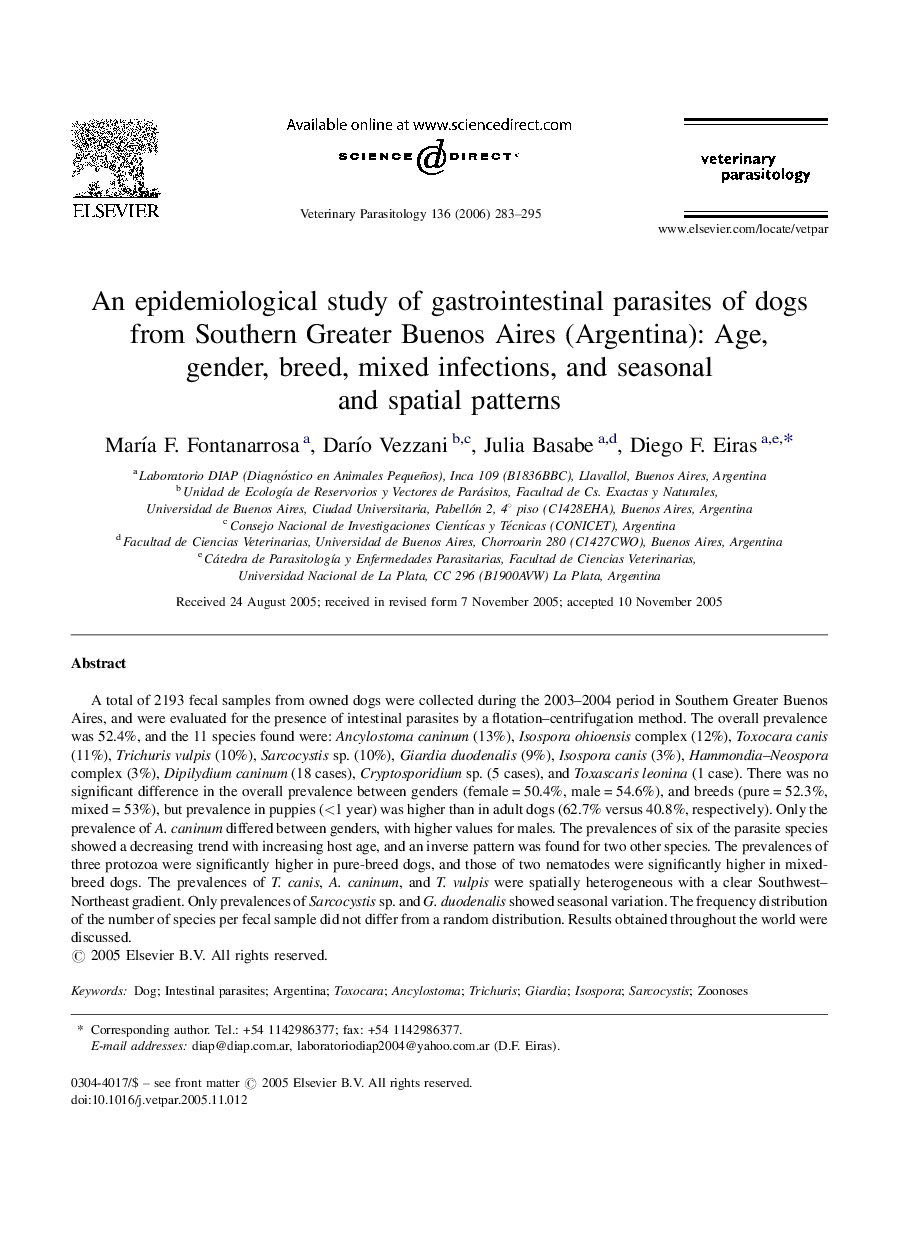| کد مقاله | کد نشریه | سال انتشار | مقاله انگلیسی | نسخه تمام متن |
|---|---|---|---|---|
| 2472564 | 1555799 | 2006 | 13 صفحه PDF | دانلود رایگان |

A total of 2193 fecal samples from owned dogs were collected during the 2003–2004 period in Southern Greater Buenos Aires, and were evaluated for the presence of intestinal parasites by a flotation–centrifugation method. The overall prevalence was 52.4%, and the 11 species found were: Ancylostoma caninum (13%), Isospora ohioensis complex (12%), Toxocara canis (11%), Trichuris vulpis (10%), Sarcocystis sp. (10%), Giardia duodenalis (9%), Isospora canis (3%), Hammondia–Neospora complex (3%), Dipilydium caninum (18 cases), Cryptosporidium sp. (5 cases), and Toxascaris leonina (1 case). There was no significant difference in the overall prevalence between genders (female = 50.4%, male = 54.6%), and breeds (pure = 52.3%, mixed = 53%), but prevalence in puppies (<1 year) was higher than in adult dogs (62.7% versus 40.8%, respectively). Only the prevalence of A. caninum differed between genders, with higher values for males. The prevalences of six of the parasite species showed a decreasing trend with increasing host age, and an inverse pattern was found for two other species. The prevalences of three protozoa were significantly higher in pure-breed dogs, and those of two nematodes were significantly higher in mixed-breed dogs. The prevalences of T. canis, A. caninum, and T. vulpis were spatially heterogeneous with a clear Southwest–Northeast gradient. Only prevalences of Sarcocystis sp. and G. duodenalis showed seasonal variation. The frequency distribution of the number of species per fecal sample did not differ from a random distribution. Results obtained throughout the world were discussed.
Journal: Veterinary Parasitology - Volume 136, Issues 3–4, 31 March 2006, Pages 283–295